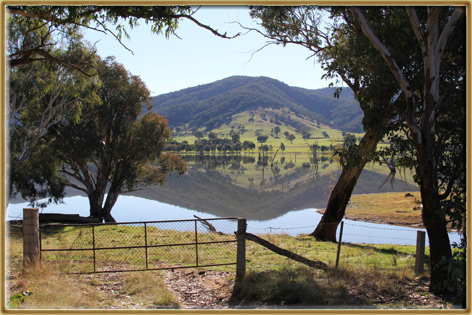Granya glory
/Thought you might enjoy this postcard-like picture from Lake Hume. The trees on the opposite hillside were nearly clearer in the reflection on the lake, than looking at the hill itself!

Over the Queen's birthday long weekend (yes, over a month ago) we took a drive to Granya. A friend of my sister had inherited some beekeeping gear he didn't have a use for. We collected it, with a view to sharing it with others if we can use it, or finding another use (or at least recycling it) if it is beyond that.
On the way home we were pulled over by a boy in blue (we presume he was a Tallangatta-based cop) who was just checking we had a legitimate reason for carting gear around the countryside on a long weekend. Good to see neighbourhood watch in action! He threw in a licence check and asked Build-It Bloke to blow into the bag ... both of which were no drama, of course!




